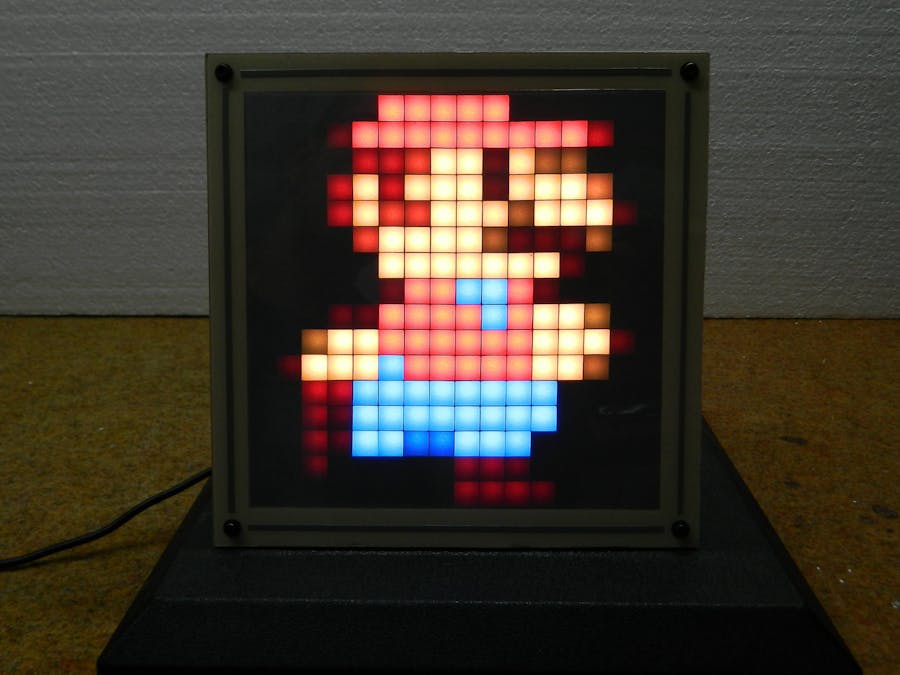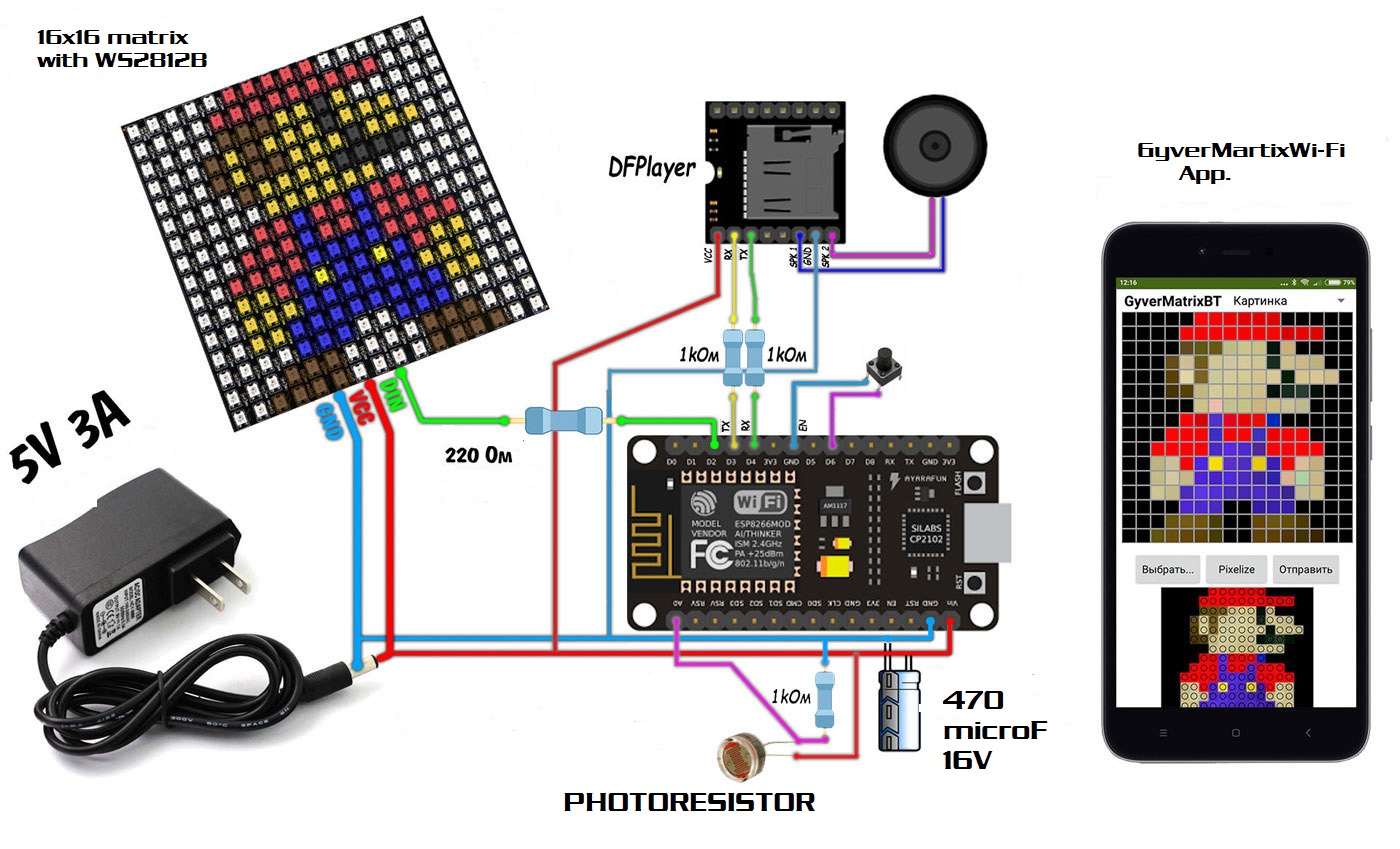This time I will show you how to control adressable led matrix 16 on 16 with smartphone. This is variation of GyverMatrix project, and In this case, a Wi-Fi network is used instead of Bluetooth. Now there is no need to use a real-time clock module because the time is synchronize with NTP server over the Internet. There is also no need for a Bluetooth module because the connection is made through the Wi-Fi network.
So the device is extremely simple to build and contains only a few components:
- The microcontroller unit is NodeMCU, ESP8266 or Wemos D1 which contain large amount of memory and WiFi on board. In my case it is ESP8266.
- 16 on 16 Led matrix module consist 256 WS2812 adressable Leds (Such matrices are sold at a price of 10 to 15 dollars to Aliexpress)
- The device also contains a DFPLAYER module that contains mp3 audio files needed for the alarm, or background sounds
- Small speaker
- one Button
- and at the end, 5V power supply capable to give minimum 3A of current
Almost all functions of the matrix can be manually controlled through this button with a combination of the number and length of presses. To control the matrix via a smartphone, you need to install the "GyverMatrixWiFi" application. Detailed instructions for making, as well as the files for this project can be found on GitHub: https://github.com/vvip-68/GyverMatrixWiFi/.
To get a better visual effect, the matrix diodes should be separated by partitions. For this purpose, a grid is printed on a 3D printer. Making the original grille from this project requires a lot of time and material (PVC). That's why I created a custom grid that requires several times less material and printing time. You can download the STL files at the link below. A tracing paper should be placed over the grid to diffuse the light.
The matrix has the following features:
Modes: Uploading pictures, Ticker and Painting.
Effects: Rainbow, The fire, Matrix, Wondering cube, Snowfall, Starfall, Maelstrom, Paintball, Soud effects, Animation, Clock, Date
Games: Arkanoid, Tetris, Maze, Runner, Snake.
Capabilities: Auto-connect to matrix at startup, Brightness and display speed settings, Using the accelerometer in games.
Unfortunately my camera only has automatic settings and does not cope well with changing the light intensity, so the video and colors are not clear. In reality this looks fascinating.
Finally, the device is placed in a box with appropriate dimensions, made of PVC board with a thickness of 3 mm, and coated with self-adhesive colored wallpaper. You can watch the whole procedure of making the device on the video.





















Comments
Please log in or sign up to comment.